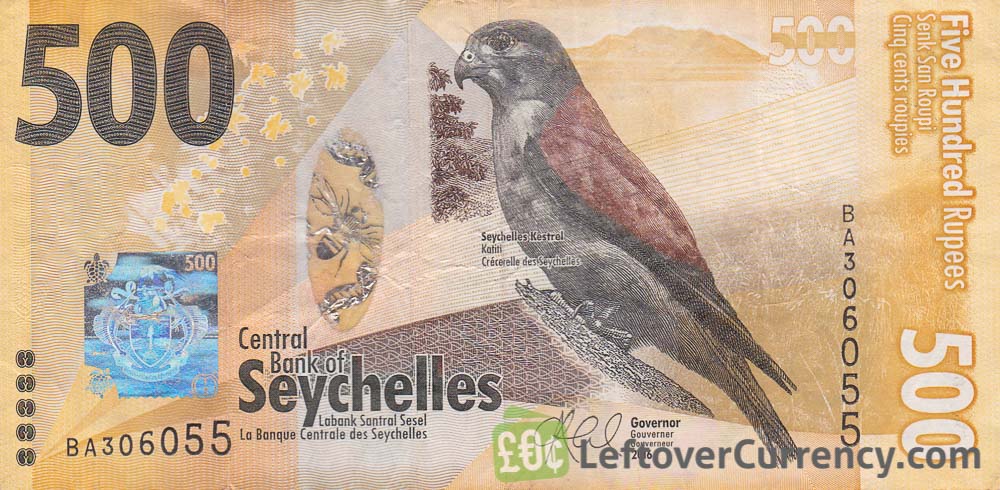The Seychelles is the smallest country in Africa and has the lowest population, with just over 100,000 residents in 2022. Despite that, the Seychelles operates its own currency – Seychellois Rupees.
The Seychellois Rupees exists under the currency code SCR and is a completely independent currency. Despite there being several other currencies also termed ‘Rupee’, the Seychellois Rupee is independently managed by and within the country.
There’s a lot that you probably didn’t know about this unique currency that we will uncover in this blog! So, let’s get down to business.
1. 1976 marked the release of the newly independent Seychelles Rupee
A major part of this currency’s history lies in the country’s history, first as part of the British colony and then as an independent country from 1976 onwards.
In 1914, the British Legislative Council worked with the Governor of the Colony of the Seychelles to roll out the first collection of Rupees. However, it wasn’t until 1976 that the Seychelles took ownership of their own paper money via the Seychelles Monetary Authority and issued a new set of notes featuring the first President of the Seychelles.
Another redesign was launched in 1979, then again in 1989 and then in 1998.
The most recent set of notes was launched in 2016 – with more on this release in a later fact…
2. The Seychelles is the smallest country to have its own currency
As the smallest country by population in Africa, it may come as no surprise for you to learn that the Seychelles is, therefore, the smallest country in the world to have its own currency.
The country’s independent monetary policy was initially pegged to a selection of international currencies, meaning the SCR’s value would vary depending on the global market and economy. Since 2008, though, the SCR has floated freely in the market.
An online investment site states that in 2008, when the Seychellois Rupee first became a free currency, it lost around 43% of its value almost instantly. Over the years, it has rebuilt its gross domestic value through international investment and expansion across fishing, farming, and small-scale manufacturing industries.
3. The 40th anniversary was marked with a new set of notes
A modern set of notes was released in 2016 to mark 40 years since the Seychelles was declared independent. This collection ranges in value from 25 Rupees to 500 Rupees – with the most modern notes following the theme ‘Seychelles’ Unique Biodiversity – the backbone of the economy’ in design.
Wildlife plays a big part in the design of the Seychellois Rupee notes, which are all extremely colourful and design-centric. For example, the 50 Rupee note depicts a Black Parrot on the front and the back a tree frog. The 100 Rupee note has a Black Paradise Flycatcher bird on the front and an Aldobra Banded Snail on the back of the design.
Interesting note: Before Seychelles became independent and the currency was brought back under the country’s own banking system, all of the earliest notes featured an image of Queen Elizabeth II in the same way as UK banknotes.
4. 1 Seychellois Rupee equates to 100 cents (and £0.058)
A single Seychellois Rupee is broken down into 100 cents, with SCR coins starting from 1 cent and stretching up to 10 Seychellois Rupees in value.
In terms of the international value from a currency exchange perspective, a single Rupee is the equivalent of £0.058 pence, so just less than 6p per Rupee. So, £1 = 17 SCR.
5. The Seychellois Rupee is managed by the Central Bank of Seychelles
When the Seychelles first became independent in 1976, the Seychelles Monetary Authority controlled the currency and its position on the world stage. In 1979, the Central Bank of Seychelles took over and assumed responsibility for the circulation and monetary policy of the Seychellois Rupee.
Under the Central Bank, the currency became more secure, adding features like the hologram to the design of the bank notes.
Where to exchange the Seychellois Rupee
We hope you learnt something new in this blog – and if nothing else, now feel fully confident in planning a trip to the Seychelles and knowing exactly which currency you need to take with you.
Suppose you return from a Seychelles trip with cash in your pocket. In that case, we exchange Seychellois Rupees back into British pounds, funnelling the value of your leftover currency back into your bank account or donating it to a charity of your choosing. Find out more about the process and how it works by accessing the FAQs page of our website or selecting a currency to exchange and going through the motions.
Have you found a currency that we don’t offer on our website?
Let us know if you encounter any currencies we don’t list on our website! We are always keen to extend our service and ensure that we cover all currencies worldwide.

 Loading
Loading